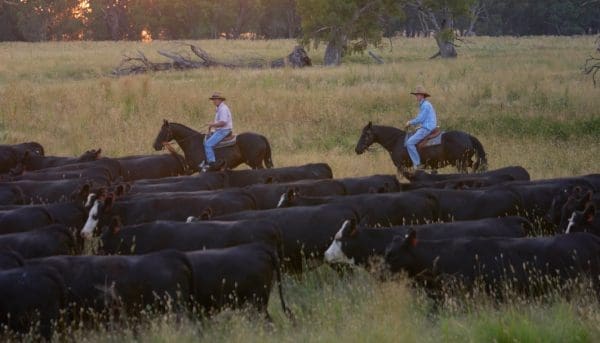IF YOU have been to an industry conference or a field day in the past year, it is likely that you have heard the terms “insetting” and “offsetting” when the conversation about carbon arises.
The terms refer to the way carbon credits can be used and are often seen as something that adds complication to an already complicated concept.
With that in mind, this article will aim to add some clarity to insetting and offsetting and take a look at why the two terms are generating so much discussion.
For this explainer, let’s presume you have already done the work and been issued carbon credits for everyone tonne of CO2 you have saved from the atmosphere.
Like sheep, cattle or grain, carbon is now a commodity for you to market and you have some big decisions to make.
The “carrot” approach to emissions reduction
The most popular option is to sell them offsets, which is the option pretty much everyone who has ever earned a carbon credit has taken.
Many have described the offsets market as the carrot approach to emissions reduction, you do the work to reduce or draw down emissions and sell that work, in the form of carbon credits, to a company which is putting greenhouse gases in the atmosphere.
The main purchasers of offsets are known as “compliance buyers” and they are usually big emitting companies, like power stations, who are forced by governments to keep their emissions to a certain level or purchase offsets if they exceed it.
Say a power station has emitted 50T more CO2 than is allowed, it can purchase 50 carbon credits from you to offset those emissions and balance the books.
Companies can also voluntarily purchase carbon credits to offset their emissions and make claims in their marketing – like Coles purchasing carbon credits to sell some of its meat as carbon neutral.
The aim of offsets is to make carbon an openly traded product. As well-known carbon market analyst Raphael Wood put it:
“Carbon is like any other commodity that you trade off your farm, there are supply dynamics and there are demand dynamics, price forecasts and maturities in forward contracting.”
Like any other commodity, some carbon offsets are worth more than others – with premiums for factors like integrity and marketability.
What about insetting?
While offsetting is an older and embedded concept in the carbon market, many have been calling for producers to consider “insetting” carbon credits generated on farm.
Insetting means the carbon credits will never enter the open market and instead be used to balance out the emissions generated on that farm.
There are many factors that contribute to the footprint of a farm, including the use of vehicles and machinery and the methane belched out by livestock. So, if the carbon credits stay on farm those emissions can effectively be lowered.
Most carbon accounting rules mean that carbon credits can only be used once, so if a farmer sells a carbon credit to a power plant, the power plant owns the credit and the farmer can not claim the emissions reduction in marketing other products.
Why are people talking about insetting?
Concerns about future market access have been the main catalyst for people encouraging producers to hold onto their credits and inset them against their own business.
Many companies involved in the beef supply chain have set their own carbon neutral targets – Coles and McDonald’s want to be net zero by 2050, JBS by 2040, Woolworths to be carbon positive by 2050 and the list goes on. Many banks have also pledged to have net zero finance by certain dates.
Most of these targets include the entire supply chain and mean that market access could be limited if the livestock do not comply with the claim.
As was said by a company representative at a conference last year “we don’t want to be going to the open market for carbon credits, we want to be buying the credits when we buy the beef”.
What are the benefits of insetting?
One of the main incentives for insetting credits is the possibility a carbon neutral or low carbon supply chain – for which there are relatively few examples.
There is a growing of carbon neutral beef brands in Australia, but most of them are small and involve vertically integrated companies and have relied on purchasing offsets to make the claim.
Coles’ finest is one of the main carbon neutral ranges that has involved smaller scale farmers. While it has had some reliance on carbon credits to make the claim, it has been working with the producers to reduce their emissions and create offsets.
Coles was contacted about any financial incentives it is offering producers and a spokesperson for the company said its financial arrangements with suppliers were confidential.
As Beef Central reported last year and as has been repeated many times in public forums, consumers have not shown a willingness to pay a premium for the carbon neutral claim.
Are insetting and offsetting mutually exclusive?
Balancing the issue of future market access and making a return from carbon projects was raised at the recent nature-based solutions conference in Brisbane earlier this month.
Conference organiser and Carbon Farmers of Australia co-founder Louisa Kiely said there were many factors to weigh up, including the possibility of being able to inset and offset.
“Future use is still questionable – there is no certainty around that you will have to go carbon neutral,” Ms Kiely said.
“If your farm is a reasonable size, you have some tree plantings and you are a grazier, your carbon footprint is relatively low and your ability to earn carbon credit is high there is the chance to do both.”

